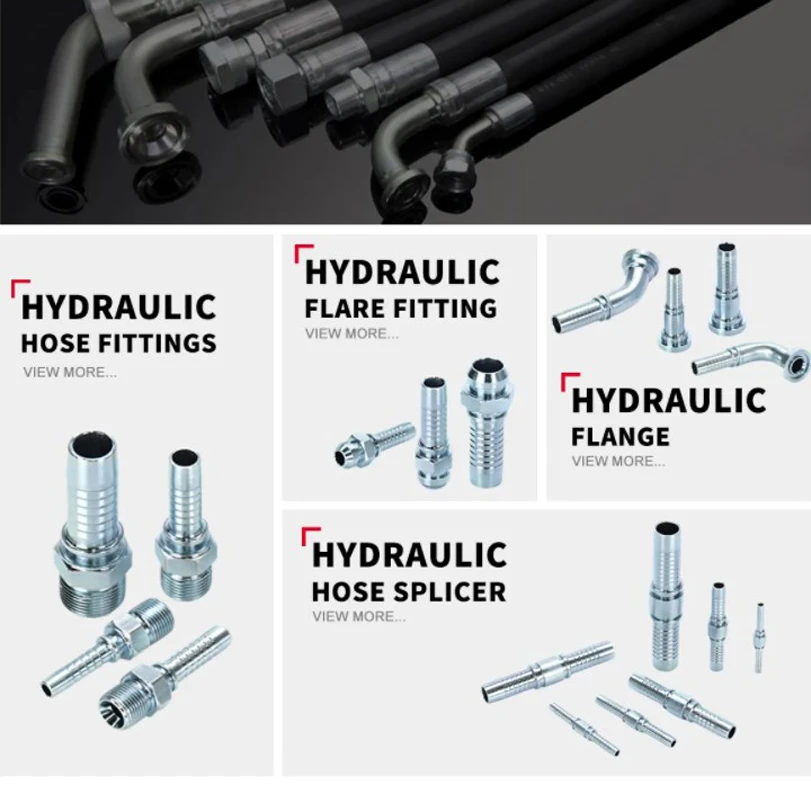335345435
jan . 06, 2025 11:19 Back to list
oil hose
Selecting the Right Oil Hose A Comprehensive Guide to Optimization and Safety

In industrial and automotive applications, the choice of an appropriate oil hose is a critical decision that impacts efficiency, safety, and reliability. With a multitude of products available, understanding the specific characteristics and requirements can significantly enhance operational performance. As an expert in fluid transfer solutions, I draw from extensive experience to guide users in choosing the right oil hose.
Oil hoses must be rigorously tested for durability, compatibility, and performance under pressure. One pivotal factor is the hose's material. Generally, oil hoses are crafted from nitrile rubber, PVC, or composite materials, each offering varied benefits. Nitrile rubber, known for its excellent resistance to oil and other hydrocarbons, is ideal for situations demanding high oil compatibility. PVC options, while not as high in resistance, offer superior flexibility and are suitable for applications where frequent directional changes are involved.

Size selection remains another crucial aspect. Incorrect sizing can lead to inefficient fluid transfer, pressure drop, or even catastrophic failure. The inside diameter of the hose must correspond to the specific application requirements to ensure optimal flow rate and pressure maintenance. For those less familiar, it’s advisable to consult with experts or manufacturers who can provide guidance tailored to particular operational needs.
Temperature tolerance is equally important, particularly in environments subject to thermal fluctuations. Most oil hoses are designed to withstand a standard temperature range, but extreme conditions require specialized products. For high-temperature scenarios, silicone hoses or hoses with a special heat-resistant lining might be necessary to prevent degradation and extend service life.
oil hose
Regarding pressure ratings, hoses must be vetted for their capacity to endure the demands of the system it integrates with. This requires a clear understanding of the operational pressure as well as any potential spikes or surges. Users should prioritize hoses with a burst pressure rating significantly higher than the anticipated operating pressure, ensuring a broad safety margin.
Another essential consideration is the hose’s reinforcement. Many high-performance oil hoses incorporate braided steel or textile layers, enhancing structural integrity and pressure resistance. For high-pressure applications, a multi-layer braided hose offers superior durability and longevity.
In terms of certifications and compliance, professionals dealing with oil hoses should seek products that conform to industry standards such as ISO, SAE, or ASTM. Such credentials guarantee not only performance consistency but also safety, reducing risks of leaks or failures that could lead to environmental hazards or operational downtimes.
Ultimately, maintaining oil hoses through regular inspections and preventive maintenance is critical. Look for signs of wear, such as cracks or stiffening, which could indicate material fatigue or elastomeric breakdown. Prompt replacement of any compromised hose segments ensures continued safety and effectiveness.
In drawing upon this synthesis of expertise, users can select oil hoses that not only meet their current operational demands but anticipate future needs, facilitating growth and adaptability in fast-paced industrial settings. The investment in quality hoses, tailored to specific applications, serves as a cornerstone of sustainable and secure operational practices.
-
SAE 100 R17 Black Smooth Cover Hydraulic Hose
NewsMar.07,2025
-
SAE 100 R17 Black Smooth Cover Hydraulic Hose
NewsMar.07,2025
-
SAE 100 R17 Black Smooth Cover Hydraulic Hose
NewsMar.07,2025
-
SAE 100 R17 Black Smooth Cover Hydraulic Hose
NewsMar.07,2025
-
SAE 100 R17 Black Smooth Cover Hydraulic Hose
NewsMar.07,2025
-
steel wire braided hydraulic hose
NewsMar.07,2025



